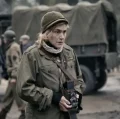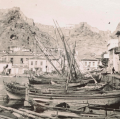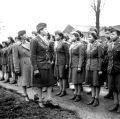Apr 25, 2022
Today is Anzac Day – 25 April 2022.
What began at 4:30 am on 25 April 1915 lives in the collective memory of Australians for all time – the legendary ANZACS (Australian and New Zealand Army Corps) were born and forged in the heat of battle at Gallipoli; many of them never made it home. Nearby on the Greek Island of Lemnos, the heroic women of the Australian Army Nursing Service were there to ease the men’s suffering and nurse them the best way they could.
Women such as Sister Alice Ross-King (She’s one of my all time Mighty History Chick) who under fire protected her patients after the Germans aircraft attacked them and showed such heroism she was awarded the Military Medal for her bravery along with nurses Dorothy Cawood, Mary Jane Derrer and Clare Deacon.
As for the Turks… well what can you say about a country who honours an invader and renames part of their land “ANZAC Cove” and pays respect to the fallen ANZACS year after year. Amazing.
I wrote “Mabel of the ANZACS” and loosely based it on Sister Alice Ross-King’s heroics.
https://store.ausxippublishing.com/product/mabel-of-the-anzacs-by-mary-d-brooks/
They shall grow not old, as we that are left grow old;
Age shall not weary them, nor the years condemn.
At the going down of the sun and in the morning
We will remember them.
#LestWeForget
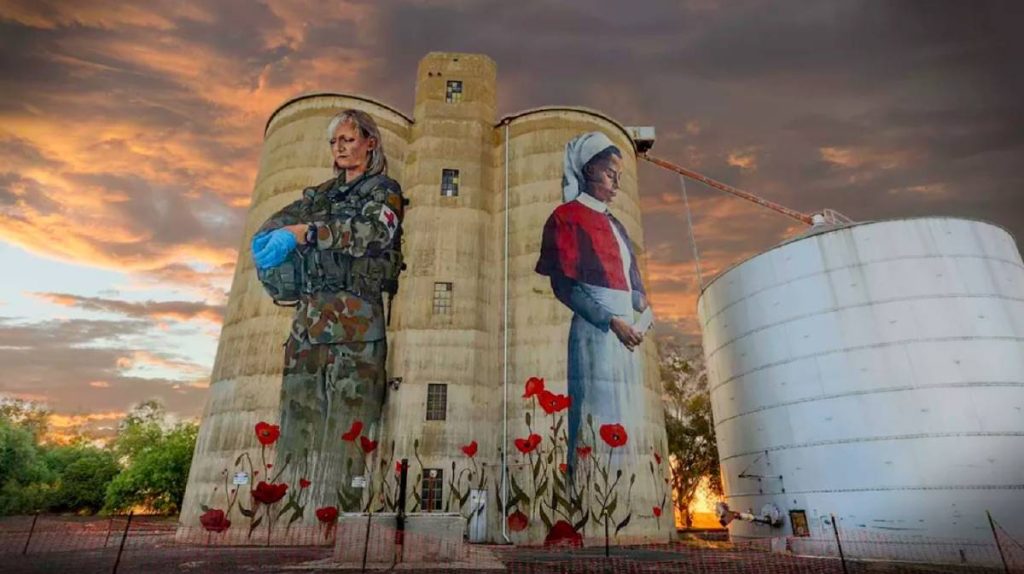
Apr 8, 2022
The Lemnian Community of Victoria is proud to host an upcoming exhibition of photographs taken by soldiers, nurses and doctors during their time in Lemnos, prior to, during and post the Battle at Gallipoli. These photos are an incredible link to Australia’s Anzac story and are rarely shown in public.
An upcoming exhibition of photographs taken by nurses, doctors and soldiers during WW1 on the Greek island of Lemnos will be available on April 25, 2022 (which is, of course, one of the most sacred days in Australian history, Anzac Day). These photos were taken prior to the Battle at Gallipoli, during the battle when Lemnos was used as part of the ANZAC field hospital and post the battle. The Lemnos Gallipoli Commemorative Committee (LGCC) has graciously donated these photos to the The Lemnian Community of Victoria so they can be permanantly displayed in Braeside, Victoria. The organisation is located at 906 Springvale Road, Braeside.
Lemnian Community of Victoria President, Phillip Diamataris, said: “The gesture offered to our community by the Lemnos Gallipoli Commemorative Committee is extremely humbling. The photographs are a permanent mark in time capturing our brave soldiers and nurses as well as our Lemnian brothers and sisters going about their day to day duties, under the cloud of World War One,” Mr Diamataris said.
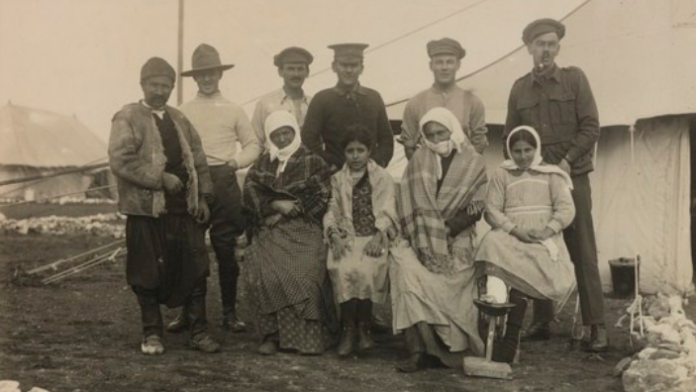
Local villagers attend the 3rd Australian General Hospital for medical treatment. Photographer AW Savage. State Library of NSW Collection.
“The honour to have these precious photos on display permanently at our facility allows our members, as well as the broader community, an opportunity to connect with history. A history that has connected Lemnos with Australia forever.
“We look forward to welcoming the Lemnos Gallipoli Commemorative Committee, Federal and State politicians, local council representatives, members of our community and other guests to witness this momentous occasion on a day that is very important to all Australians.”
The photographs were sourced from collections in war memorials, museums, libraries and universities from across Australia and elsewhere. They include photographs taken by the Australian photographers Sergeant Albert Savage, Major Laurence Herschel Harris and War Correspondent Phillip Schuler, as well the British photographer Lieutenant Ernest Brookes held in London, amongst many others.
Mr Claven said that this exhibition of high resolution images from 1915 is a great opportunity for the people to see with their eyes the depth of the connection between Lemnos and the Anzacs.
“Since I first saw these rarely published images I have been captivated by them and been eager to bring them to the attention of the public,” Mr Claven said.

Myrina Harbour, Lemnos 1915. Photographer Sergeant James Edmond McPhee. State Library of Victoria Collection.
He explained that the exhibition photographs show the Anzacs arriving on Lemnos in their transport ships, its great harbour of Mudros filled with Allied ships preparing for war, the troops practicing their landing techniques on Lemnos’ shores, the hospitals where Australia’s 130 nurses cared for the sick of the campaign, as well as the local villagers, the great Anzac camp at Sarpi and the graves of the 148 Australians and 76 New Zealanders who lie there.
Mr Claven said that one of the most fascinating aspects of the Lemnos Gallipoli photographic archive is the number of photographs revealing the inter-action between the local Lemnians and the Anzac soldiers and nurses.
“There are lots of images of Anzacs visiting local hora, of sitting in the local kafenio, enjoying the natural hot springs at Therma, viewing local churches and schools, and the natural beauty of the island,” Mr Claven said.
“Some of the most touching are those of Australians with local families. These reveal the first real links between Australians and Greeks in Greece.”
Mr Claven has also produced an exhibition booklet explaining the role of Lemnos and the story of the photographs. The booklet will be provided to all attendees as a momento of their attendance.
Committee President, Lee Tarlamis MP AO, urged people to attend the exhibition.
“All who attend the Exhibition will be amazed at the images displayed and go away from it better informed and appreciative of the Australian presence on Lemnos 100 years ago,” Mr Tarlamis said.
Source: The Greek Herald
Apr 6, 2022
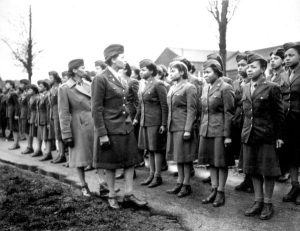 Known as the ‘six triple eight’, battalion was only group of African American women to serve overseas during second world war
Known as the ‘six triple eight’, battalion was only group of African American women to serve overseas during second world war
The only all-Black, all-female second world war battalion will be awarded the congressional gold medal after Joe Biden signed a bipartisan bill on Monday to honor the women’s efforts.
The 6888th central post directory battalion, also known as the “six triple eight” was the only group of African American women to serve overseas during second world war. Created in 1944, it included 824 enlisted Black women and 31 officers from the women’s army corps, the army service forces and the army air forces.
Initially, only white women were admitted to the women’s army corps, which was created by President Franklin D Roosevelt in 1943. However, following a push from the first lady, Eleanor Roosevelt, and civil rights leader Dr Mary McLeod Bethune, Black women were eventually admitted.
In Europe, the battalion sorted and routed mail for over 4 million American service members and civilians. In addition to serving as a role model to generations of Black women who joined the military afterwards, it was also credited with solving a growing mail crisis due to a shortage of postal officers.
Before their arrival in England, warehouses in Birmingham were filled with millions of undelivered letters and packages. When the women arrived in February 1945, they worked around the clock to maintain 7m information cards that included serial numbers to distinguish different people with the same last names.
In the midst of rats nibbling on packages filled with cookies and cakes, the women investigated mail with insufficient address details to identify the intended recipient. They also returned mail addressed to service members who had died.
Because the warehouse windows were blacked out to prevent light from showing during nighttime air raids, the women often had to sift through the mail in dimly lit environments, with their units organized into three separate eight-hour shifts. During winters, the women wore long johns and extra layers of clothing beneath their coats in the unheated warehouses.
The battalion eventually created a new mail tracking system and processed 65,000 pieces of mail per shift. Within three months, the women cleared the six-month backlog of 17m pieces of mail.
Despite their efforts, the women faced racist and sexist treatment, including “hostility and rumors impugning their character spread by both white and Black male soldiers who resented the fact that Black women were allowed in the army”, according to the US Army Center of Military History.
At one point, a general criticized the unit commander, Maj Charity Adams, and threatened to give her command to a white officer.
“Over my dead body, sir,” Adams reportedly responded.
Out of the 850 members in the unit, only six are still alive.
“We helped each other. We worked with each other,” retired Maj Fanny Griffin McClendon, who served as a battalion supervisor, told ABC News.
McClendon, who is now 101 years old, was taken by surprise when she learned that her battalion was going to be honored. “It never occurred to me that we would even be considered for a medal of any kind,” she said.
In a statement by Wisconsin representative Gwen Moore, who sponsored the bill after a daughter of 6888th member Anna Mae Robertson contacted her, she praised the battalion’s exploits during the war.
“Facing both racism and sexism in a warzone, these women sorted millions of pieces of mail, closing massive mail backlogs, and ensuring service members received letters from their loved ones. A Congressional Gold Medal is only fitting for these veterans who received little recognition for their service after returning home,” Moore said.
Read More
Apr 3, 2022
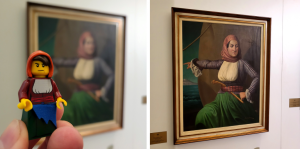 The 1821 Greek Art Exhibition was at the Sydney Town Hall until yesterday. Unfortunately it’s gone from today.
The 1821 Greek Art Exhibition was at the Sydney Town Hall until yesterday. Unfortunately it’s gone from today.
The LEGO figures of Greek Revolution heroes and heroines have paid a visit to the St Basil’s NSW/ACT 1821 Greek Art Exhibition at Sydney’s Town Hall.
The LEGO figures have been specially-created by Australian ‘Lego Classicist,’ Pop-Artist and Historical Archivist, Liam D. Jensen.
They include General Theodoros Kolokotronis, Alexandros Mavrokordatos and Lord Byron, as well as Laskarina Bouboulina, Manto Mavrogenous and Domna Visvizi.
The St Basil’s NSW/ACT 1821 Greek Art Exhibition was open at Sydney’s Town Hall until Sunday, April 3.
It is a collaboration with the Athens War Museum and features rare objects inspired by the Greek Revolution of 1821, as well as the ‘Heroes Made of Metal’ collection of traditional Greek costumes by internationally renowned sculptor Nikos Floros.
READ MORE: 1821 Greek Art Exhibition officially launched at Sydney Town Hall.
Mar 30, 2022
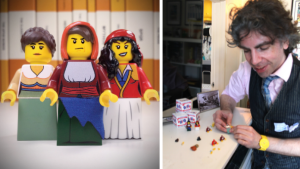 Walking into the Sydney studio of Australian ‘Lego Classicist,’ Pop-Artist and Historical Archivist, Liam D. Jensen, is like stepping into an exciting alternate universe.
Walking into the Sydney studio of Australian ‘Lego Classicist,’ Pop-Artist and Historical Archivist, Liam D. Jensen, is like stepping into an exciting alternate universe.
To my right, is a shelf filled with family photos, historical books and artworks of ancient ruins. To my left, is an entire wall dedicated to Liam’s custom-designed LEGO figures including three related to the Greek Revolution – General Theodoros Kolokotronis, Alexandros Mavrokordatos and Lord Byron.
Standing amongst it all is Liam himself with a huge smile, welcoming handshake and kind offer of Greek shortbread if I ever get hungry during our interview.
The Australian Lego Classicist’s strong connection to Greece:
My first contact with Liam was back in March 2021 when he was asked by the Director of The British School at Athens, Professor John Bennett, to create one-off LEGO figures of Kolokotronis, Mavrokordatos and Lord Byron to mark the Greek Revolution bicentenary.
This year though, Liam says he wanted to make his Greek Revolution collection more ‘equal and inclusive’ and so decided to immortalise three Greek heroines in LEGO as well.
They are: Greek naval commander Laskarina Bouboulina, Greek patriot and commander Manto Mavrogenous, and the lesser-known ‘Bouboulina of Thrace’ Domna Visvizi.
Read More



 Known as the ‘six triple eight’, battalion was only group of African American women to serve overseas during second world war
Known as the ‘six triple eight’, battalion was only group of African American women to serve overseas during second world war

